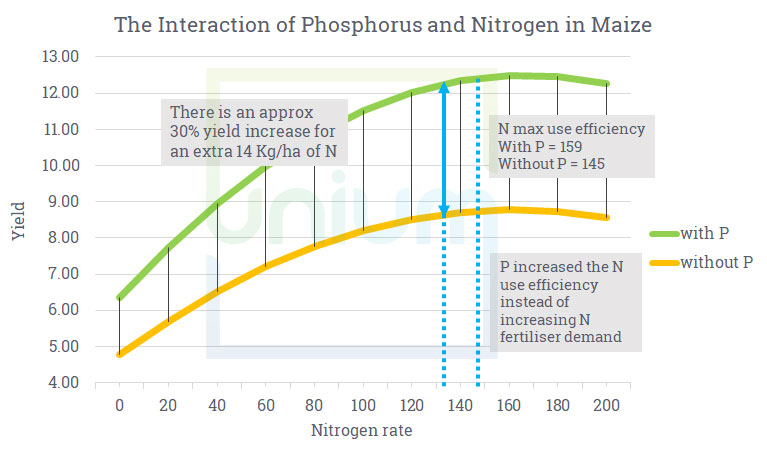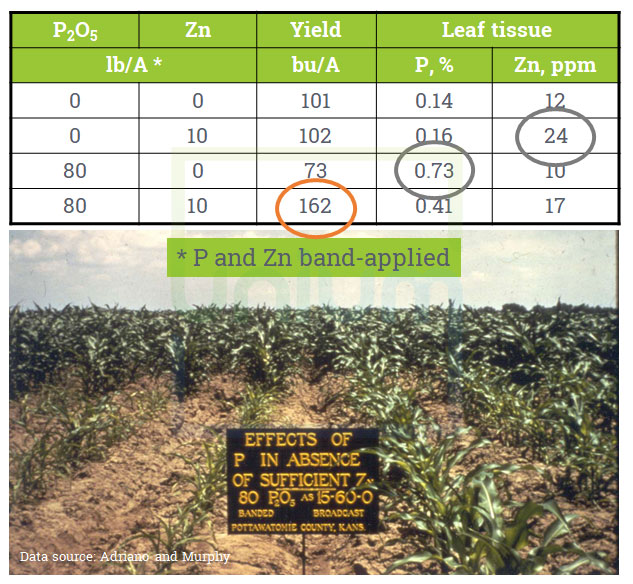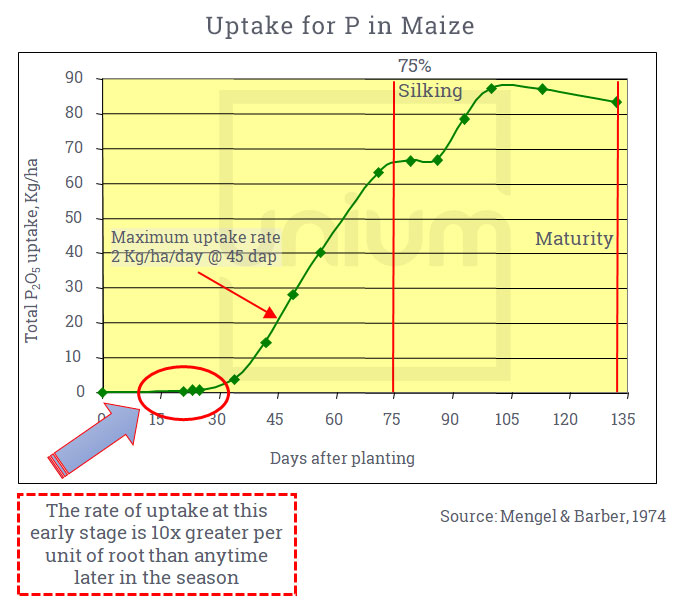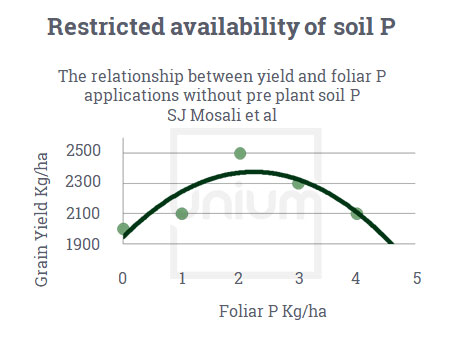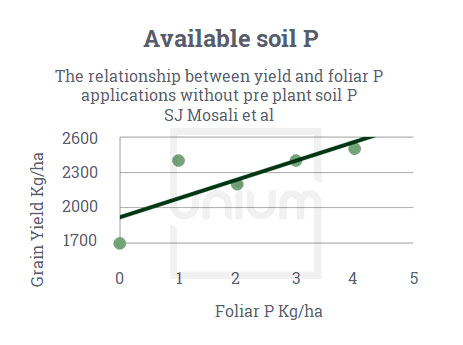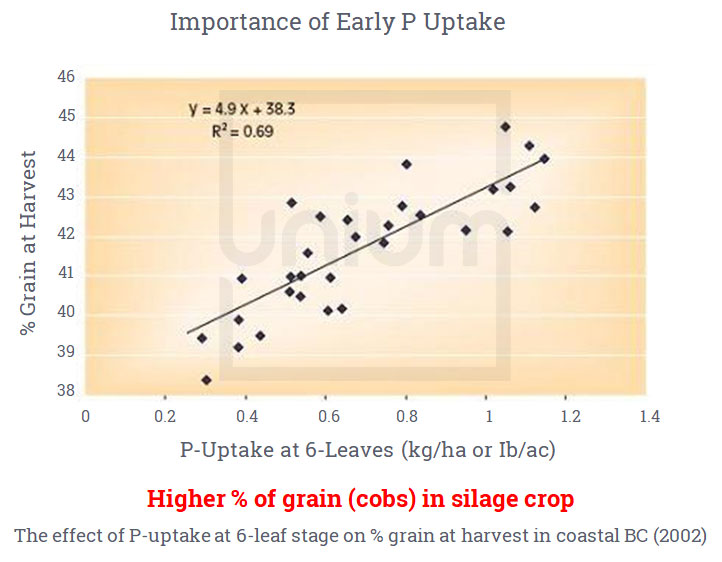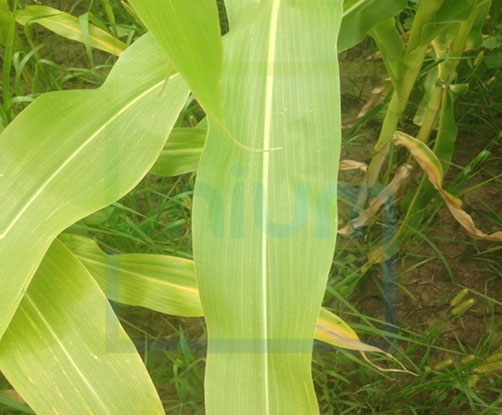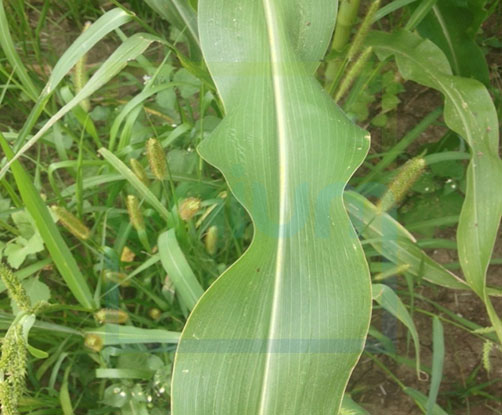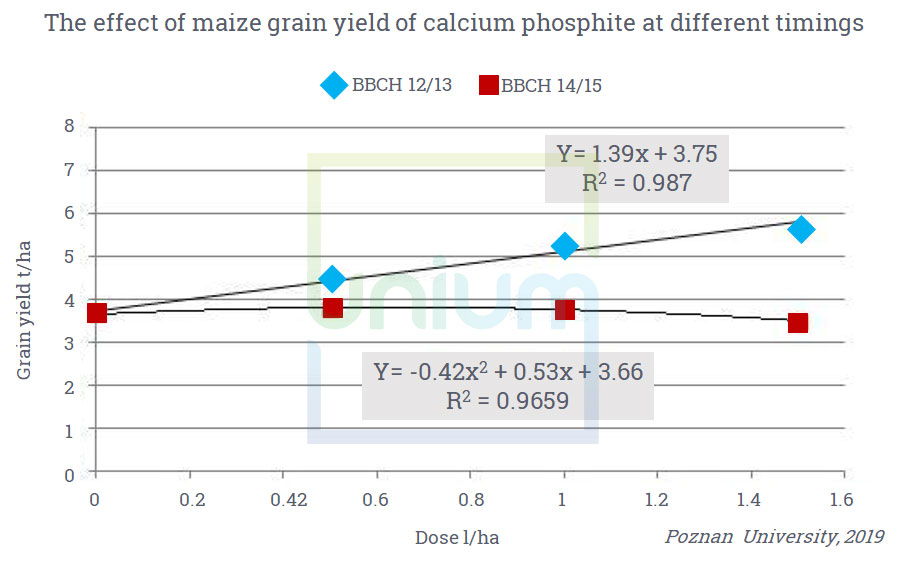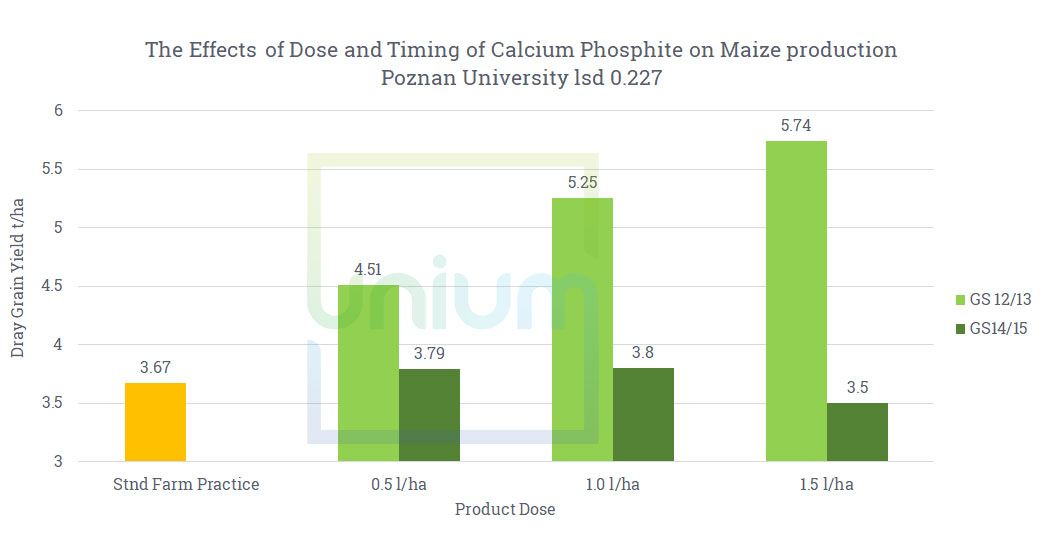Amaizing

Maize is the third most important cereal crop in the world and is becoming increasingly popular in the UK, albeit that most is not directly consumed by humans.
As a C4 plant, maize is generally more water efficient than a C3 plant making it more suited to dry climates/regions. It is a rapidly growing crop and very hungry for nutrients in order to maximise its potential –
Phosphorus in particular, hence the use of starter fertilisers, manures and composts to help establish the crop.
Phosphorus plays a key role in maize production with a number of functions in the plant:
- Crop maturation
- Water relations along with potassium
- Cold tolerance
- Internal energy relations with photosynthesis
- Enhanced rooting with increased nutrient access and assimilation esp. K, Ca and Mg
Phosphorus plays a key role interacting with other nutrients in both a synergistic (e.g. nitrogen) and antagonistic manner (e.g. zinc, calcium, copper). The synergy with nitrogen can play a major role in nitrogen-use efficiency…
These data show the long-term difference in yield caused by annual fertilisation with P at a rate of 40 lb P2O5/A/year. This experiment was continued for 30 years from 1961 to 1991.
The optimum N rate was only slightly affected by P, but adding P fertiliser greatly increased yield, lowered N requirement per bushel of grain, and greatly increased profit.
[Source: Schlegel, A.J., K.C. Dhuyvetter, and J.L. Havlin. 1996. Economic and environmental impacts of long-term nitrogen and phosphorus fertilization. J. Prod. Agric. 9(1):114-118.]
One of the key antagonistic interactions with a high level of phosphorus is with zinc (Zn) and we would recommend a foliar application of zinc to prevent this from being a limiting factor.
Maize is highly sensitive to Zn deficiency and high P availability can induce Zn deficiency in soils that are marginally Zn deficient. In this example from Kansas, band-applying P without Zn made a Zn deficiency worse than broadcasting the P without Zn. The corn in the background (see pic) received 10 lb/acre of Zn with P, and this corrected the deficiency. The soil in this example was low in both P and Zn. (Adriano and Murphy).
When plants are Zn deficient, their ability to regulate P accumulation is severely impaired. As a consequence, P absorbed by the roots accumulates in excess in the shoot (as can be seen in the data below for the Kansas example). The negative interaction between the two nutrients appears to occur in the plant, not in the soil. Zinc and phosphate can react in the soil to form zinc phosphate, but its solubility is usually sufficient to provide adequate Zn to plants (Havlin et al., 1999).
- Zn deficiency impairs plant P regulation.
- Either high soil P or large amounts of applied P can induce Zn deficiency if soil Zn is low and no Zn fertilizer is applied.
The maximum rate of uptake of phosphorus per hectare is often during the period of active growth up to tasseling, as shown in this example below from Indiana. However, the same study indicated that while P uptake was very small from 25 to 29 days after planting, the rate of uptake per unit of root was as much as ten times greater during that period than at any time later in the season.
The concentration of P in the seedling (during the period 25 to 29 days after planting) was 0.58 to 0.60% P in proportion to dry matter. Source: Mengel, D.B. and S.A. Barber, 1974.
The following data shows that the more phosphorus there is available in the soil, the more responsive a crop is to foliar applied phosphorus. This is particularly true for calcium phosphite applications, which trigger increased nutrient acquisition and assimilation from the soil – this is particular helpful under difficult soil conditions. It’s not only phosphorus uptake that benefits, the same is true for potassium, magnesium, calcium and other micro-elements.
Seed Phosphorus concentration can play a major role in early plant growth. Seed Phosphorus has been found to support;
- Cereals for about 11 days.
- OSR for around 7 days
- Maize for approx. 14 days
After that period, the seedling requires an external phosphorus source, either from the soil or fertiliser, to maintain and optimize growth. The rate of uptake within the first 15-30 days of plant growth is 10x greater per unit of root than any time later in the season, highlighting the critical requirement at this early stage of enhanced rooting and available phosphorus.
Early season limitations can result in restrictions on crop growth, from which the plant cannot recover even when the P supply is increased later. Maximum root growth is achieved when P is supplied for the first 4 weeks of growth. When it was restricted for the first two weeks, secondary root development was hindered and yield was reduced to 80% of maximum (Boatwright and Viets, 1966).
Early phosphorus supply is critical to maximise potential and something we have known for a long time based on the agronomic practise of applying manures, composts, starter fertilisers etc and latterly biostimulant/nutrient seed treatments.
This can now also be supplemented with stabilised, buffered and safe calcium phosphite applications between 2-4 leaves to ensure these potentially limiting factors are removed.
Trials and experience over many years clearly supports the use of biostimulant stabilised phosphite seed treatments and follow-on foliar applications of stabilised phosphites to:
- Increase root and shoot biomass
- Increase overall nutrient use efficiency especially nitrogen.
- Increased fresh weight (4-7 t/ha)
- Increased dry weight (1-2 t/ha) with equivalent energy content and starch yield
Last year we carried out a very detailed piece of work in Poland at Posnan University, looking at the application of calcium phosphite rates and timings, with detailed measurements during the season.
Summary of the Report
- Enhanced Crop Establishment (+2% more plants/m2)
- Increased dry weight within the first 8 weeks (+14% per plant)
- Increase in % dry matter within the first 8 weeks (+7%)
- Optimised Chlorophyll content within the first 8 weeks (+5%)
- Increased ear length (+9% cm)
- Enlarged ear diameter (+5% cm)
- Increased grains/ear (+27%)
- Increased Dry grain yield (+23% t/ha)
- Optimal Dose rate for either timing for optimal yield was 1.0 l/ha
Optimal Timing is BBCH 12/13
Conclusion
- Apply 0.75 l/ha Acalsa (calcium phosphite + PGA)or 1.0 l/ha Calfite (calcium phosphite) at the 3 to 4 leaf stage is the optimal programme.
- Consider a zinc application to remove phosphorus antagonisms and also a foliar boron to maximise flowering biology (pollen tube length)
The same principals hold true for game cover plots.


